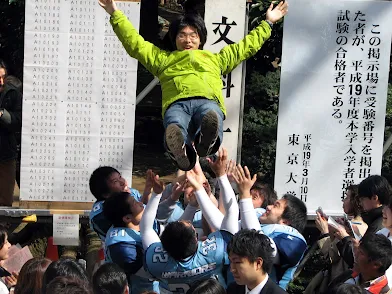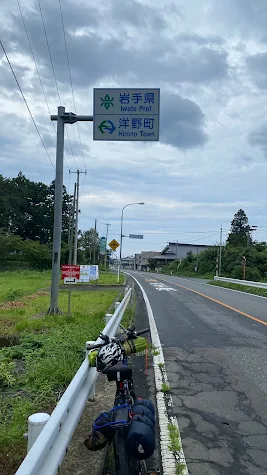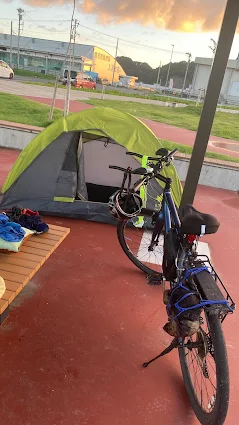The beauty of Japan.
If someone asked you; " What is your imagination of Japan?"
Well! you might say Japan is a very advanced society, a respectful society, a highly technological society. You might go on further to say; if I have the opportunity to go there, to live there, to study there it would be an amazing experience for me.
Yes! of course, Japan is a beautiful country. From its safe metropolitan to its stunning outdoors. From its exotic food and cultures to its global outreach. From its amazing manufacturing and economic powers to its leading innovative institutions. There is nothing this society can not beat.
I was lucky to experience all of these wonders of Japan when I was allowed to live and study in Japan by the Japanese Government's Ministry of Education, Science and Technology under its MEXT Scholarship programs through its Embassy in Port Moresby.
1. MEXT Scholarship; Acquiring a scholarship among the best.
MEXT scholarship is a prestige scholarship provided by the Japanese government through the Ministry of Education, Culture, Sports, Science, and Technology. MEXT scholarship is usually available every year and you can collect the application forms through the Japanese embassy.
In Papua New Guinea, the number of MEXT scholarships available is very small. Around 3 or 4 recipients can get the scholarship per year. The competition in securing MEXT Scholarship is very competitive. You have to think smart and different from the rest of the applicants to be even shortlisted for the application process of MEXT.
I was lucky because when I applied for the MEXT scholarship I have the experience of working with the United Nations Development Program, graduated with a degree and a post-graduate Honors degree, and had already written a full research proposal on my research topic.
But importantly I have very high-profile people who wrote my reference giving my application more weight to secure the scholarship.
Important note.
- Write a research proposal on your topic
- Have significant people write your reference for the scholarship
- Have some good experience working with government or large organizations
- Show enthusiasm and be positive toward the process.
Process of the MEXT Scholarship
- The application forms- collect the application forms from the Japanese Embassy and fill them in. Attached relevant required document needed.
- Exam- If you are shortlisted you will sit for the exams
- Interview is done after passing the exam.
- If you are successful in your interview, you will be required to write to universities in Japan to secure a supervisor.
- Finally, fix your official documents for the scholarship and prepare to travel to Japan.
2. Your first point of contact
Your supervisor is a very important person in your life while studying in Japan. He/she has huge power over your stay in Japan. Finding someone willing to help and communicate with you in any situation is very important. At the same time, it is also important to have a supervisor that is willing to provide guidelines in terms of advice, reading materials recommendations, and able to provide critical analysis of your research.
It is also important to do some evaluation on your supervisor as well.
- personality- strict or gentle.
- language- can he/she understand you and communicate with you in English or whatever your language is.
- level of exposure to the international community- this helped transformed his views on a lot of things and be open-minded.
- character-kind, mean, angry
- personal views towards another group, ethnicity, culture, etc. You don't what someone with conflicting views supervising you. It will be a disaster for you
3. Figure out your supervisor.
Many international students in Japan always faced difficulties communicating with their Japanese supervisors. In my personal experienced if you want to avoid this, it is better to figure out your Supervisor and established an effective way of communicating with him/her.
I did most of my communication through email and prepared well online proposals whenever I want to report to my supervisor on my progress or asked questions. I found my supervisor's turn to be more open and expressed his intentions clear when I put my views and questions in writing.
The important thing is to figure out what means of communication works between you and your supervisor. These could be through emails, messages, PowerPoint, and a face-to-face interview.
4. Life as a Research student.
As a student scholar, your life in a Japanese university begins as a research student whether you are a Master's or a Ph.D. candidate. The research student period is usually 3 to 6 months. This is the period where you start researching your topic. You can attend your lab`s seminars while you are researching. Attending seminars is a great way to help build up your topic and understand how to conduct your research. During the seminars, your lab`s Master and Ph.D. students are going to present their research. This is a great opportunity for you to learn from them and their research to determine yours.
This is also a good time to consult your supervisor on your research interest and topics. Get to know your supervisor and evaluate him/her based on their personality, communication style, values, and so on.
During my research student life, I was not able to attend my lab's seminars and evaluated my supervisor well because I was got up in attending Japanese classes. Dunn! the Japanese classes were so terrible for me.
5. Admission to a full-time student

Full admission is when you are accepted into your post-graduate studies and received a full-time student status.
However, in Japanese Universities, you have to take an entrance exam, sit for an interview, and passed it to become a full-time student of a university. Once you become a full-time student this is when your master's or Ph.D. study starts.
The process starts with;
1. Doing the entrance exams
2. Interview
3. Registration
The entrance exams are different for each school and its divisions. After you do the exam you will be scheduled to sit for the interview in front of all the lecturers at your school. This is a heartbeat moment so preparing well for your interview is important.
One important point to note. It is important to get approval from your supervisor. Because at this point, if your relationship with your supervisor does not go well he/she can do everything under his/her power to make you fail or be rejected by the university.
6. Determined your topic and stick to it.
One important thing to note is to choose your research topic early. I recommend choosing your topic during your research student period. You must have an idea or have already decided on your topic when beginning your first semester as a Master's or Ph.D. student. Having already decided on your research topic will help you to complete your paper with full satisfaction. The important thing is to stick to your topic until you've finished your analysis and have written your final paper.
Remember it is very important to choose a topic on which your supervisor has a lot of background knowledge. In this way, he/she will be in a better position to help you. If you choose a topic that is a little out of his/her study and research area most supervisors will be a little skeptical about helping you.
I found myself in such a situation when I decided on my topic. My topic was seismic activities and landslides. My supervisor's experience area was in national parks. This created a distance between him and me to provide good advice and supervision. So, it is important to choose a topic that is related to your supervisor's research field and experiences.
If you follow all these. You will have enough time to satisfactorily do your analysis properly, carry out your research thoroughly, and will have more time to make improvements to your models and results if needed. You will also have a lot of time to write a very well, satisfying paper at the end of your postgraduate course.
7. Supervisor dilemma
This is based on my personal experience.
Most Japanese supervisors a very silent and difficult to talk to. The first time a got accepted as a full-time student my communication with my supervisor did not go well.
Back home your superior would usually have posted Post-graduate student consultation schedules on their doors so you can visit and talk to them about your research but in Japan, it is difficult because such schedules are not available. So it makes things a little difficult for me to have regular conversations with my supervisor.
I have to say, it is very disappointing for me. During my whole 2 years of the Master course, I talked to my supervisor maybe less than 10 times and our conversations lasted less than 5 minutes. It is very disappointing because I did my Master's course 75% on my own without proper advice or guidance from my supervisor.
I really don't know who is at fault here. It is me having no confidence to talk to my supervisor or is it my supervisor having difficulties conversing with me regarding my research.
Anywhere, among all these struggling circumstances I found an effective means to communicate with my supervisor and that is through email.
My supervisor is a cool and collected person. He turns to understood and helped me much better when I prepared all my questions, proposal, and thoughts through reports or proposals and writings. Quite a task for me but it worked because then his replies are always much better than when having face-to-face conversations with him.
8. Changing supervisor
Many students don't know that but you have the right to change your supervisor if you face discrimination from your supervisor. In this case, you can rise the issue with your school's admin and they can help you to seek a new supervisor. In the case of scholarship students. The scholarship caretaker at your school can help you to try and resolve the issue with your supervisor or help you find another supervisor.
Conclusion.
Thank you for reading this far. I know now have some idea of how to do your post-graduate studies in Japanese universities.

































.jpg)



